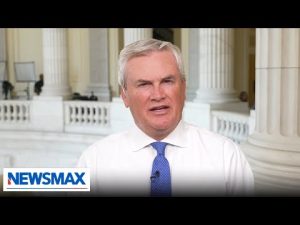The recent commentary addressing the activity of certain gangs in Los Angeles highlights a significant social issue that often remains untouched or gets skewed by many in mainstream media. The situation raises a poignant question about responsibility and community leadership, especially when it pertains to illegal immigration and crime. This particular commentary calls out these gangs, known for their territorial dominance and frequent tagging, who now face the prospect of being overshadowed by a much larger entity: immigration enforcement.
In many neighborhoods in Los Angeles, the presence of gangs is a reality that residents have dealt with for generations. These gangs often control their territories with an iron grip, engaging in illicit activities and exerting a considerable influence in local matters. The question raised here is one of leadership and accountability. If these gangs are so invested in their communities, then why is there silence when it comes to outside forces dealing with people, including those who may be living illegally?
The larger picture of immigration enforcement, especially actions by ICE, brings its set of controversies and emotional responses. However, it underscores the rule of law, a principle that should be consistent in all aspects of governance and society. There is an inconsistency when gang leadership demands respect and control over their territories but turns a blind eye when these areas are implicated in broader legal crackdowns. This calls into question who truly holds power in these neighborhoods and who is responsible for the safety and well-being of all residents, not just those affiliated with gang activities.
Advocating for criminal activity or elevating criminals as community icons contradicts the very essence of a society based on law and order. While there is an understanding that many who enter the United States seek better opportunities, the process of immigration should be lawful and orderly. Meanwhile, the presence of gangs often complicates this dynamic, as they can influence the flow of illegal immigration and maintain a stronghold over the communities where immigrants settle.
Ultimately, the attention should be on fostering community leaders who prioritize law-abiding behavior and support pathways that help residents, both legal and undocumented, attain their version of the American dream. Encouraging people to flaunt laws or resist enforcement efforts does nothing to improve conditions for anyone involved. The focus should be on building bridges that enable all community members to thrive within the framework of the law, ensuring safety, stability, and genuine prosperity. By addressing these issues head-on, society can work toward more inclusive and lawful communities for future generations.







